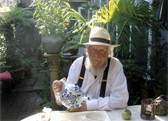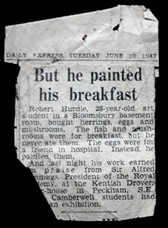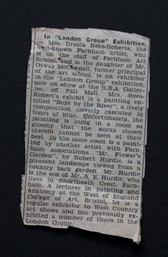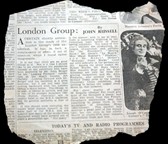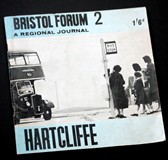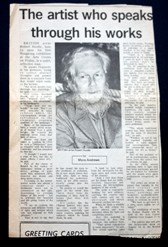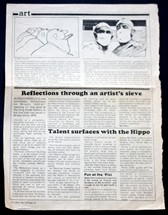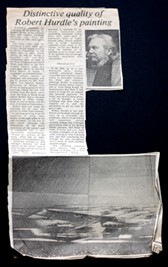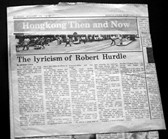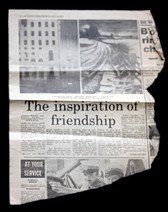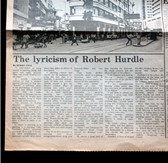Hong Kong Arts Centre 1978
'Land and Water'
The artist who speaks through his works
By Myra Andrews
British artist Robert Hurdle, here to open his first Hong Kong exhibition at the Arts Centre on Friday, is a quiet, reflective man.
He pauses frequently in his sentences, trying to collect abstract thoughts and present them in a concrete form that would relate easily to the layman.
"An artist speaks best through his paintings" he said.
One critic described Hurdle, 60, as a painter who 'stripped away the accidental and inessential' in his landscapes.
'Those were not my words' he said. 'But I am very selective in using subjects where the topographical details are subordinate to the elemental, structural qualities of the landscape'.
Many of his landscapes have a nearly aerial scope, as if viewed from a great height. He extracts the essential items from that field of vision.
Hurdle was born and raised in London. In 1950 he took a 'temporary' post as educator with the Bristol University and has remained to this day.
'I thought I would stay a year or two, but like so many others, I never left' he said.
Part of the charm of Bristol is the variety of landscapes within a short drive, settings of quiet sunlit hills, sandstone cliffs, deserted sea-shores and deep green gorges.
Focussing on the serene, restful scenes was almost a conscious choice - a deliberate move not to concentrate on the ugly, depressing or stressing things of the world - but to celebrate the beautiful and life giving forces of the world.
'I try to express the sensuous and delicate forms of light and texture which one can respond to with pleasure'.
That is not to say that he has closed his eyes to the problems of pollution. He is very much aware that field after field is being bulldozed for re-development, as the 20th century slowly creeps into the countryside.
He prefers to extol the parts of the world that 'were there from the beginning of time. And he hopes that they will continue'.
It's rather like the Chinese painter who gave up the world for the mountains, waterfalls and fustic country, painting his subjects where he found them, he said.
'I tend to turn away from the metropolis for the more open and rustic areas of the country. And I feel that those are the things that are really terribly important and precious, the life-sustaining qualities of the world'.
The artist is constantly looking for new subjects, combing the countryside with camera and car to photograph and sketch whatever catches his eye.
When he finds a suitable spot, he will return for more photos and more sketches, when the light and conditions permit.
But the painting is conceived in that first instance, the subject is born. "That initial conception is most important." He said. The actual painting takes place in his studio. Working slowly, he prefers a series of oil paintings to a single creation. A set may take a month or more to finish.
"There is a definite permanence in oil paintings. I paint in such a way that the picture won't be destroyed by time."
The 24 paintings in his exhibition took over five years to complete, a ratio of just slightly one every three months.
"I paint more slowly that many painters" he said "But there are certain painters that I know who are just as slow as I am".
His paintings are the result of deep thought, rather that a splash of emotion or inspiration.
There is too little thought in modern paintings, he said.
"In the past, painters worked within established traditions. Up until the 19th century, original painters worked within the confines of these traditions. Lesser painters would paint minor works under the same guidelines.
"The whole traditional system has been destroyed and the sense of direction lost" he said.
"Whether or not it can be regained depends on society. It takes support and encouragement from the commercial sector of society for art to thrive. Part of the problem of art in a contemporary society stems from the critics' fear to criticise" he said.
In the 1900s several paintings came to light that had been previously ignored by art experts for centuries and the artists were given posthumous recognition, he said.
The critics are afraid to repeat that mistake in the 20th C and consequently there are many paintings and sculptures produced today which the critics are almost afraid to criticise He added.
'We have to get back to a new more stable set of values.'
The exhibition of works by Robert Hurdle will be held at the Arts Centre Galleries from August 11 to 30. The painter will also give one lecture-slide show on August 14 in the Recital Hall.
use slides to view full text and images, click on small pictures to see large version
